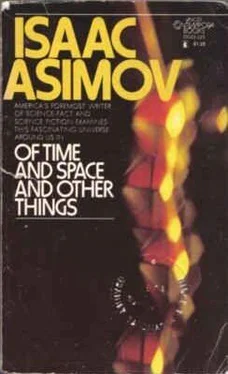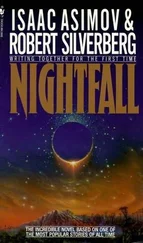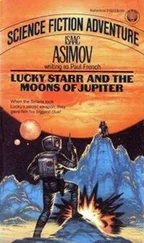Isaac Asimov - Of Time and Space and Other Things
Здесь есть возможность читать онлайн «Isaac Asimov - Of Time and Space and Other Things» весь текст электронной книги совершенно бесплатно (целиком полную версию без сокращений). В некоторых случаях можно слушать аудио, скачать через торрент в формате fb2 и присутствует краткое содержание. Год выпуска: 1972, ISBN: 1972, Издательство: Lancer Books, Жанр: Прочая научная литература, на английском языке. Описание произведения, (предисловие) а так же отзывы посетителей доступны на портале библиотеки ЛибКат.
- Название:Of Time and Space and Other Things
- Автор:
- Издательство:Lancer Books
- Жанр:
- Год:1972
- ISBN:ISBN: 0-447-33023-3
- Рейтинг книги:4 / 5. Голосов: 1
-
Избранное:Добавить в избранное
- Отзывы:
-
Ваша оценка:
- 80
- 1
- 2
- 3
- 4
- 5
Of Time and Space and Other Things: краткое содержание, описание и аннотация
Предлагаем к чтению аннотацию, описание, краткое содержание или предисловие (зависит от того, что написал сам автор книги «Of Time and Space and Other Things»). Если вы не нашли необходимую информацию о книге — напишите в комментариях, мы постараемся отыскать её.
Of Time and Space and Other Things — читать онлайн бесплатно полную книгу (весь текст) целиком
Ниже представлен текст книги, разбитый по страницам. Система сохранения места последней прочитанной страницы, позволяет с удобством читать онлайн бесплатно книгу «Of Time and Space and Other Things», без необходимости каждый раз заново искать на чём Вы остановились. Поставьте закладку, и сможете в любой момент перейти на страницу, на которой закончили чтение.
Интервал:
Закладка:
If a star were to blow up, then we might have some thing.
Come to think of it, my instinct for destruction must be well developed after all, or I wouldn't find myself so fascinated by the subject of supernovas, those colossal stellar explosions.
Yet in thinking of them, I have, it turns out, been a piker. Here I've been assuming for years that a supernova was the grandest spectacle the universe had to offer (pro vided you were standing several dozen light-years away) but, thanks to certain 1963 findings, it turns out that a supemova taken by itself is not much more than a two inch firecracker.
This realization arose out of radio astronomy. Since World War 11, astronomers have been picking up micro wave (very short radio-wave) radiation from various parts of the sky, and have found that some of it comes from our own neighborhood. The Sun itself is a radio source and so are Jupiter and Venus.
The radio sources of the Solar System, however, are virtually insignificant. We would never spot them if we weren't right here with them. To pick up radio waves across the vastness of stellar distances we need something better. For instance, one radio source from beyond the Solar System is the Crab Nebula. Even after its radio waves have been diluted by spreading out for five thousand light-years before reaching us, we can still pick up what remams and impinges upon our instruments. But then the Crab Nebula represents the remains of a supernova that blew itself to kingdom come-the first light of the explo sion reaching the Earth about 900 years ago.
But a great number of radio sources lie outside our Galaxy altogether and are millions and even billions of light-years distant. Still their radio-wave emanations can be detected and so they must represent energy sources that shrink mere supemovas to virtually nothing.
For instance, one particularly strong source turned out, on investigation, to arise from a galaxy 200,000,000 light years away. Once the large telescopes zeroed in on that galaxy it turned out to be distorted in shape. After closer study it became quite clear that it was not a galaxy at all, but two galaxies in the process of collision.
When two galaxies collide like that, there is little likeli hood of actual collisions between stars (which are too small and too widely spaced). However, if the galaxies possess clouds of dust (and many galaxies, including our own, do), these clouds will collide and the turbulence of the collision will set up radio-wave emission, as does the turbulence (in order of decreasing intensity) of the gases of the Crab Nebula, of our Sun, of the atmosphere of Jupiter, and of the atmosphere of Venus.
But as more and more radio sources were detected and pinpointed, the number found among the far-distant',ga laxies seemed impossibly high. There might be occasional collisions among galaxies but it seemed most unlikely that there could be enough collisions to account for all those radio sources.
Was there any other possible explanation? What was needed was some cataclysm just as vast and intense as that represented by a pair of colliding galaxies, but one that involved a single gallaxy. Once freed from the neces sity of supposing collisions we can explain any number of radio sources.
But what can a single galaxy do alone, without the help of a sister galaxy?
Well, it can explode.
But how? A galaxy isn't really a single object. It is simply a loose aggregate of up to a couple of hundred billion stars. These stars can explode individually, but how can we have an explosion of a whole galaxy at a time?
To answer that, let's begin by understanding that a galaxy isn't really as loose an aggregation as we might tend to think. A galaxy like our own may stretch out 100,000 light-years in its longest diameter, but most of that consists of nothing more than a thin powdering of stars-thin enough to be ignored. We happen to live in this thinly starred outskirt of our own Galaxy so we accept that as the norm, but it isn't.
The nub of a galaxy is its nucleus, a dense packet of stars roughly spherical in shape and with a diameter of, say, 10,000 light-years. Its volume is then 525,000,000,000 cubic light-years, and if it contains 100,000,000,000 stars, that means there is I star per 5.25 cubic light-years.
With stars massed together like that, the average dis tance between stars in the galactic nucleus is 1.7 light-years - but that's the average over the entire volume. The den sity of star numbers in such a nucleus increases as one moves toward the center, and I think it is entirely fair to expect that toward the center of the nucleus, stars are not separated by more than half a light-year.
Even half a light-year is something like 3,000,000,000, 000 miles or 400 times the extreme width of Pluto's orbit, so that the stars aren't actually crowded, they're not likely to be colliding with each other, and yet…
Now suppose that, somewhere in a galaxy, a supernova lets go.
What happens?
In most cases, nothing (except that one star is smashed to flinders). If the supernova were in a galactic suburb in our own neighborhood, for instance-the stars would be so thinly spread out that none of them would be near enough to pick up much in the way of radiation. The in credible quantities of energy poured out into space by such a supemova would simply spread and thin out and come to nothing.
In the center of a galactic nucleus, the supernova is not quite as easy to dismiss. A good supernova at its height is releasing energy at nearly 10,000,000,000 times the rate of our Sun. An object five light-years away would pick up a tenth as much energy per second as the Earth picks up from the Sun. At half a light-year from the supernova it would pick up ten times as much energy per second as Earth picks up from the Sun.
This isn't good. If a supernova let go five light-years from us we would have a year of bad heat problems. If it were half a light-year away I suspect there would be little left of earthly life. However, don't worry. There is only one star-system within five light-years of us and it is not the kind that can go supemova.
But what about the effects on the stars themselves? If our Sun were in the neighborhood of a supernova it would be subjected to a batb of energy and its own temperature would have to go up. After the supernova is done, the Sun would seek its own equilibrium again and be as good as before (though life on its planets may not be). However, in the process, it would have increased its fuel consump tion in proportion to the fourth power of its absolute tem perature. Even a small rise in temperature might lead to a surprisingly large consumption of fuel.
It is by fuel consumption that one measures a star's age.
When the fuel supply shrinks low enough, the star expands into a red giant or explodes into a supernova. A distant supenova by war@ng the Sun slightly for a year might cause it to move a century, or ten centuries closer to such a crisis. Fortunately, our Sun has a long lifetime ahead of it (several billion years), and a few centuries or even a million years would mean little.
Some stars, however, cannot afford to age even slightly.
They are already close to that state of fuel consumption which will lead to drastic changes, perhaps even supernova -hood. Let's call such stars, which are on the brink, pre supernovas. How many of them would there be per galaxy?
It has been estimated that there are an average of 3 supemovas per century in the average galaxy. That means that in 33,000,000 years there are about a million super novas in the average galaxy. Considering that a galactic life span may easily be a hundred billion years, any star that's only a few million years removed from supemova hood may reasonably well be said to be on the brink. if, out of the hundred billion stars in an average galac tic nucleus, a million stars are on the brink, then 1 star out of 100,000 is a pre-supern6va. This means that pre supemovas within galactic nuclei are separated by average distances of 80 light-years. Toward the center of the nu cleus, the average distance of separation might be as low as 25 light-years.
Читать дальшеИнтервал:
Закладка:
Похожие книги на «Of Time and Space and Other Things»
Представляем Вашему вниманию похожие книги на «Of Time and Space and Other Things» списком для выбора. Мы отобрали схожую по названию и смыслу литературу в надежде предоставить читателям больше вариантов отыскать новые, интересные, ещё непрочитанные произведения.
Обсуждение, отзывы о книге «Of Time and Space and Other Things» и просто собственные мнения читателей. Оставьте ваши комментарии, напишите, что Вы думаете о произведении, его смысле или главных героях. Укажите что конкретно понравилось, а что нет, и почему Вы так считаете.












